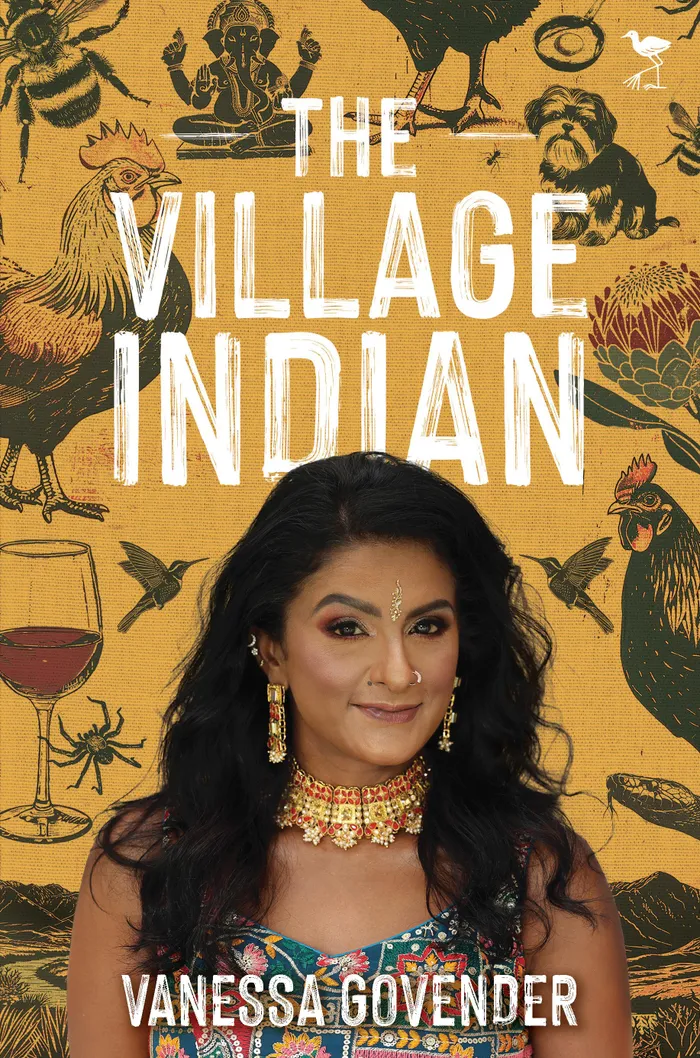From gossip to giggles: Vanessa Govender-Tedder explores rural life in 'The Village Indian'
BOOKS

In her latest literary endeavour, “The Village Indian”, Vanessa Govender-Tedder offers a vibrant and insightful glimpse into the enchanting world of small-town life in South Africa.
Image: Supplied
In her latest literary endeavour, “The Village Indian”, Vanessa Govender-Tedder, bestselling author of “Beaten but not Broken”, offers a vibrant and insightful glimpse into the enchanting world of small-town life in South Africa.
Captivating, humorous, and deeply insightful, this new book is not just a narrative but a heartfelt reflection on the unique charm and complexities of living in a close-knit village, contrasting sharply with the hustle and bustle of urban existence.
Set against the backdrop of a far-flung village in the South African countryside, Govender-Tedder paints a lively portrait of a community where mixed-race families are a rarity, providing readers with a front-row seat to a lifestyle that is both delightful and occasionally bewildering.
The author expertly weaves together personal experiences and observations, revealing the vibrant community spirit that thrives in rural enclaves, where adventure and inspiration often lurk in the most unexpected corners.
The book takes readers on a journey through the everyday realities of small-town politics, community gatherings, and the inherent quirks that define village life.
With her characteristic wit and insight, Govender-Tedder argues persuasively that these towns are anything but boring.
Instead, they pulse with energy, charm, and a sense of connection that many urban dwellers find lacking in the post-lockdown world.
Govender-Tedder enchants her audience with her unique version of South African Indian lingo, which adds an extra layer of authenticity and humour to her storytelling.
The narrative is infused with hilarious encounters - from run-ins with venomous snakes to the antics of free-range chickens - alongside instances of small-town scams, mischievous rivalries, and audacious political plottings.

Captivating, humourous, and deeply insightful, this new book is not just a narrative but a heartfelt reflection on the unique charm and complexities of living in a close-knit village, contrasting sharply with the hustle and bustle of urban existence.
Image: Supplied
The inspiration behind the book struck when Govender-Tedder and her family first settled into their village. What was expected to be a tranquil retreat quickly transformed into a whirlwind of drama and intrigue.
“The more gossip we heard, sometimes watching village politics and pettifogging from the sidelines, the more the itch became something that could not be ignored,” she explains.
The stories that unfolded were, for her, far more exciting than any news piece she had ever covered, giving birth to a narrative filled with affection and absurdity.
Govender-Tedder's portrayal of village life defies her initial expectations. “I will be honest; I expected a rather dull and quiet life. But boy was I thrown for a loop,” she admits.
Unlike the anonymity of city living, small-town life under the scrutinising gaze of neighbours exposed her family to the sheer vibrancy of community.
This experience showcased that the community could be “messy, maddening and magical all at once.”
As a mixed-race individual in a village environment where she stands out, Govender-Tedder has had to confront not just her identity but also the multifaceted interplay of race and perception.
She underscores the importance of acknowledging racial identity without allowing it to become the sole determinant of one's interactions.
“I have learned that not everything is necessarily racism … sometimes we have to accept that some people just behave badly,” she reflects.

In her latest literary endeavour, “The Village Indian”, Vanessa Govender-Tedder offers a vibrant and insightful glimpse into the enchanting world of small-town life in South Africa.
Image: Supplied
In her small-town context, her family has become a symbol of the potential for unity in diversity - a testament to what can be achieved when communities come together.
The journey of self-discovery in the village has been both difficult and liberating for Govender-Tedder. Forced into a new identity where her Indianness is on display, she has learned to embrace her culture unapologetically.
“I have to admit moving here has made me fiercely proud and protective of my culture,” she says, highlighting how living in the village has helped solidify her place within the community.
Engaging with her family in her writing has its quirks. “I think they all know me well enough to know I am always going to write about my experiences,” she jokes about her family’s reactions to her sharing their lives with the world.
Amid light-hearted banter about her husband’s desire not to be depicted as too “white,” and her domestic worker's excitement over her feature in the book, her authentic storytelling reflects the heartbeat of her family life.
As she contrasts the process of writing her two books, Govender-Tedder reveals that while they may appear oppositional, both books express the intricacies of her identity.
One delves into trauma, while the latter celebrates cultural richness and community. “Writing ‘The Village Indian’ allowed me to find my light and my laughter again,” she shares, revealing how this latest work has nurtured her spirit.
As she prepares for the mixed reception that her villagers may have upon reading about their lives, she embraces the humour that underpins her existence. “If you don’t like what is written, perhaps it’s a good time to reflect and change one’s kachara ways,” she quips.
Related Topics:
